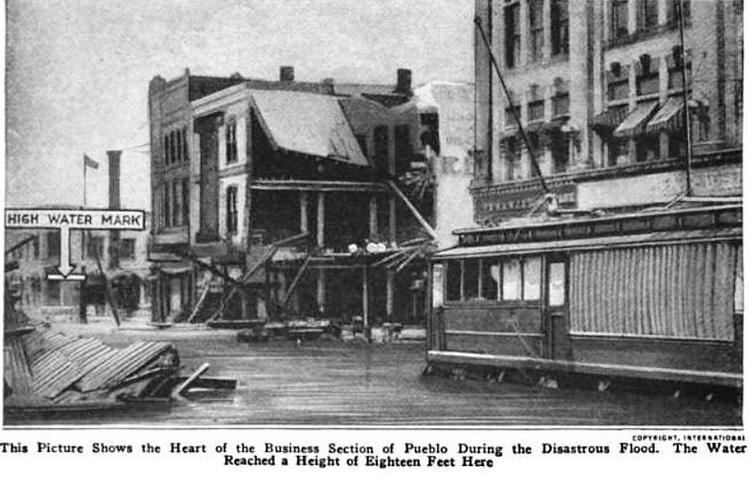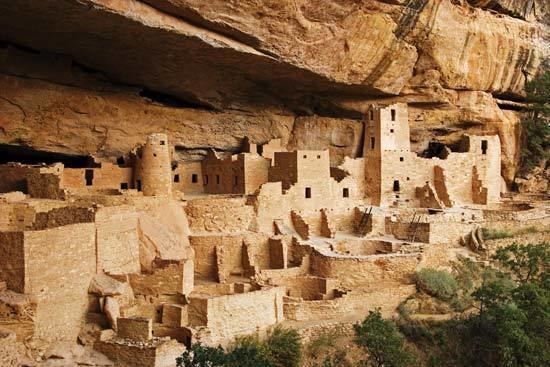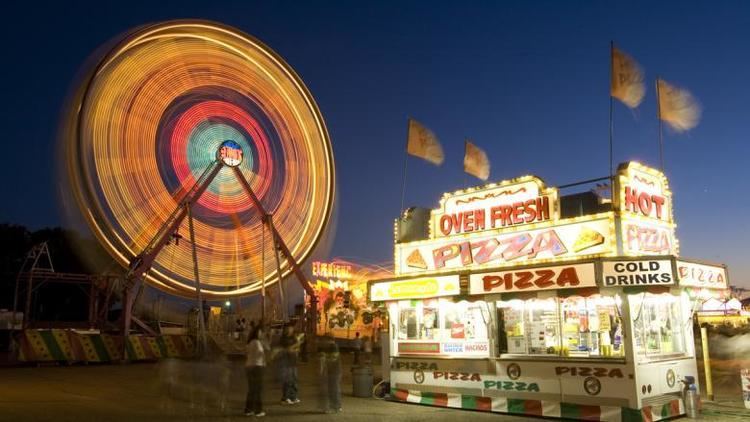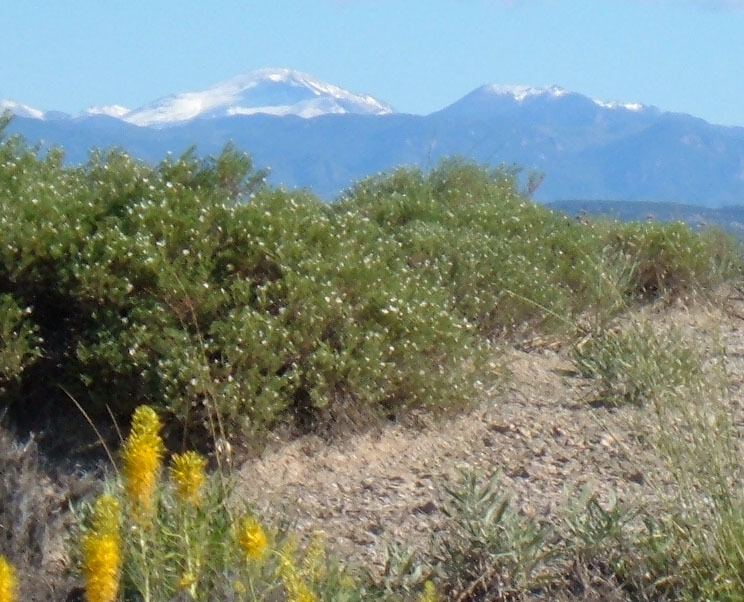Country United States State Colorado | Population 108,249 (2013) Area 45.4 sq mi | |
 | ||
Points of interest Pueblo Weisbrod Aircraft Museum, El Pueblo History Museum, Nature and Raptor Center of Pueblo, Lake Pueblo State Park, Steelworks Museum of Industry and Culture | ||
Unemployment rate 7.3% (Feb 2015) | ||
Map of Pueblo, Colorado
Pueblo is a home rule municipality that is the county seat and the most populous city of Pueblo County, Colorado, United States. The population was 106,595 in 2010 census, making it the 267th most populous city in the United States and the 9th largest in Colorado. Pueblo is the heart of the Pueblo Metropolitan Statistical Area totaling over 160,000 people and an important part of the Front Range Urban Corridor. As of 2014, Pueblo is the primary city of the Pueblo-Cañon City combined statistical area (CSA) totaling approximately 208,000 people, making it the 134th largest in the nation.
Contents
- Map of Pueblo Colorado
- Ashby food challenge 2013 pueblo colorado
- Fort Pueblo
- Pueblos Early Development Railroads Steel Expansion
- Steel Mill
- Melting Pot of the West
- Colorado Mental Health Institute at Pueblo
- Home of Heroes
- Geography
- Climate
- Demographics
- Economy and Renewable Energy
- Arts and culture
- Tourism
- Sports
- Crime
- Higher education
- Primary and secondary education
- Radio
- Television
- Transportation
- Aviation
- Politics
- Arts
- Military
- Business
- Infamous figures
- Pueblo in popular culture
- Twin towns sister cities
- References

Pueblo is situated at the confluence of the Arkansas River and Fountain Creek, 112 miles (180 km) south of the Colorado State Capitol in Denver. The area is considered semi-arid desert land, with approximately 12 inches (304.80 mm) of precipitation annually. With its location in the "Banana Belt", Pueblo tends to get less snow than the other major cities in Colorado.

Pueblo is one of the largest steel-producing cities in the United States, for which reason Pueblo is referred to as the "Steel City". The Historic Arkansas River Project (HARP) is a river walk in the Union Avenue Historic Commercial District, and shows the history of the devastating Pueblo Flood of 1921.

Pueblo has the least expensive residential real estate of all major cities in Colorado. The median home price for homes on the market in Pueblo is $147,851 as of February 2013. It is the sixth most affordable place to live in America as measured by the 2014 Cost of Living Index. Costs of housing, goods and services, utilities, transportation, groceries and health care are lower than the national average. Pueblo was listed by AARP in 2013 as one of the Best Places to Live in the USA.

Ashby food challenge 2013 pueblo colorado
Fort Pueblo
James Beckwourth, George Simpson, and other trappers such as Mathew Kinkead, claimed to have helped construct the plaza that became known as El Pueblo or Fort Pueblo around 1842. George married Juana Maria Suaso and lived there for a year or two before moving; however, Simpson had no legal title to the land. The adobe structures were built with the intention of settlement and trade next to the Arkansas River, which then formed the U.S./Mexico border. About a dozen families lived there, trading with Native American tribes for hides, skins, livestock, as well as (later) cultivated plants, and liquor. Evidence of this trade, as well as other utilitarian goods, such as Native American pottery shards were found at the recently excavated site. According to accounts of residents who traded at the plaza (including that of George Simpson), the Fort Pueblo Massacre happened sometime between December 23 and December 25, 1854, by a war party of Utes and Jicarilla Apaches under the leadership of Tierra Blanca, a Ute chief. They allegedly killed between fifteen and nineteen men, as well as captured two children and one woman. The trading post was abandoned after the raid, but it became important again between 1858 and 1859 during the Colorado Gold Rush of 1859.
Pueblo's Early Development: Railroads, Steel, Expansion
The current city of Pueblo represents the consolidation of four towns: Pueblo (incorporated 1870), South Pueblo (incorporated 1873), Central Pueblo (incorporated 1882), and Bessemer (incorporated 1886). Pueblo, South Pueblo, and Central Pueblo legally consolidated as the City of Pueblo between March 9 and April 6, 1886. Bessemer joined Pueblo in 1894.
The consolidated city became a major economic and social center of Colorado, and was home to important early Colorado families such as the Thatchers, the Ormans, and the Adamses. By the early 1870s the city was being hailed as a beacon of development, with newspapers like the Chicago Tribune boasting of how the region's lawless reputation was giving way to orderly agriculture with triumphalist rhetoric. One author crowed of Pueblo that "the necessity exists no longer for Sharp's rifles and revolvers. These have been supplied by the plow and the mowing-machine."
Pueblo's development stretched beyond agriculture. Steel emerged as a key industry very early, and in 1909 the city was considered the only steel town west of the Mississippi River.
Until a series of major floods culminated in the Great Flood of 1921, Pueblo was considered the 'Saddle-Making capital of the World'. Roughly one-third of Pueblo's downtown businesses were lost in this flood, along with a substantial number of buildings. Pueblo struggled with this significant loss, but has had a resurgence in growth.
Steel Mill
The main industry in Pueblo for most of its history was the Colorado Fuel and Iron (CF&I) Steel Mill on the south side of town. For nearly a century the CF&I was the largest employer in the state of Colorado. The steel-market crash of 1982 led to the decline of the company. After several bankruptcies, the company was acquired by Oregon Steel Mills and changed its name to Rocky Mountain Steel Mills. The company was plagued with labor problems, mostly due to accusations of unfair labor practices. This culminated with a major strike in 1997, leading to most of the workforce being replaced.
In September 2004, both United Steelworkers locals 2102 and 3267 won the strike and the unfair labor practice charges. All of the striking steel workers returned to their jobs, and the company paid them the back pay owed for the seven years they were on strike. In 2007, shortly after Oregon Steel made amends with the union and its workers, Evraz Group, one of Russia's biggest steel producers, agreed to buy the company for $2.3 billion.
Of the many production and fabrication mills that once existed on the site, only the steel production (electric furnaces, used for scrap recycling), rail, rod, bar, and seamless tube mills are still in operation. The wire mill was sold in the late 1990s to Davis Wire, which still produces products such as fence and nails under the CF&I brand name.
The facility operated blast furnaces until 1982, when the steel market collapsed. The main blast furnace structures were torn down in 1989, but due to asbestos content, many of the adjacent stoves still remain. The stoves and foundations for some of the furnaces can be seen from Interstate 25, which runs parallel to the plant's west boundary.
Several of the administration buildings, including the main office building, dispensary, and tunnel gatehouse were purchased in 2003 by the Bessemer Historical Society. In 2006, they underwent renovation. In addition to housing the historic CF&I Archives, they also house the Steelworks Museum of Industry and Culture.
"Melting Pot of the West"
Due to the growth of the CF&I steel mill and the employment that it offered, Pueblo in the early twentieth century attracted a large number of immigrant laborers. The groups represented led to Pueblo becoming the most ethnically and culturally diverse city in Colorado and the West. At one point, more than 40 languages were spoken in the steel mill and more than two-dozen foreign language newspapers were published in the city. Irish, Italian, German, Slovenian, Greek, Jewish, Lithuanian, Russian, Hungarian, Japanese, and African-American groups arrived in the area at the turn of the century and remain to the present time. The convergence of cultures led to a cosmopolitan character to the city that resulted in a number of ethnically-rooted neighborhoods that are typically not seen west of the Mississippi. Respective cultural groups maintain cultural festivals to the present, with the city being home to locations of the Order Sons of Italy, American Slovenian Catholic Union, and I.O.O.F, among others.
Colorado Mental Health Institute at Pueblo
Another major employer in Pueblo is the Colorado State Hospital. The hospital is the preeminent mental health facility in the Rocky Mountain region. Established in 1879 as the Colorado State Insane Asylum, it was renamed as the Colorado State Hospital in 1917. In 1991, the name was changed to the Colorado Mental Health Institute at Pueblo (CMHIP). The Robert L. Hawkins High Security Forensic Institute opened in June 2009 and is a 200-bed, state-of-the-art high-security facility.
Home of Heroes
Pueblo is the hometown of four Medal of Honor recipients (more than any other municipality in the United States) - William J. Crawford, Carl L. Sitter, Raymond G. Murphy, and Drew D. Dix. President Dwight D. Eisenhower upon presenting Raymond G. "Jerry" Murphy with his medal in 1953 commented, "What is it... something in the water out there in Pueblo? All you guys turn out to be heroes!"
In 1993, Pueblo City Council adopted the tagline "Home of Heroes" for the city due to the fact that Pueblo can claim more recipients of the Medal per capita than any other city in the United States. On July 1, 1993, the Congressional Record recognized Pueblo as the "Home of Heroes." A memorial to the recipients of the medal is at the Pueblo Convention Center. Central High School is known as the "School of Heroes," as it is the alma mater of two recipients, Sitter and Crawford.
Geography
Pueblo is located at 38°16′1″N 104°37′13″W (38.266933, −104.620393).
According to the United States Census Bureau, the city has a total area of 45.4 square miles (117.6 km2), of which, 45.1 square miles (116.8 km2) is land and 0.3 square miles (0.78 km2) is water (99.34% and 0.66% respectively).
Pueblo is 100 miles (160 km) south of Denver and is on the front range of the Rocky Mountains.
Climate
Pueblo sits in a high desert area of terrain in southern Colorado and is near the western edge of the Southwestern Tablelands ecology region. Pueblo has a steppe climate (Köppen BSk), with four distinct seasons. Winter days are usually mild, but the high does not surpass freezing on an average 15.3 days per year, and lows fall to 0 °F (−18 °C) or below on 7.8 nights. Snowfall usually falls in light amounts, and due to the high altitude, and the accompanying stronger sun, rarely remains on the ground for long. January is the snowiest month, followed by March, and the seasonal average is 31.8 inches (81 cm); however, snow is uncommon in October, and May or September snow is exceedingly rare, with an average first and last date of measurable (≥0.1 in or 0.25 cm) snowfall being November 6 and April 15, respectively. Summers are hot and dry, with 90 °F (32 °C) or greater highs are on average seen 66.7 days per year, with 100 °F (38 °C) or greater on 10.2 days. Diurnal temperature ranges are large throughout the year, averaging 33.4 °F (18.6 °C).
Precipitation is generally low, with the winter months receiving very little. Sunshine is abundant throughout the year, with an annual total of nearly 3470, or 78% of the possible total. Pueblo is considered a high desert climate, and sits on the desert lands in southern Colorado between Pueblo and the Royal Gorge.
Demographics
As of the census of 2000, there were 102,121 people, 40,307 households, and 26,118 families residing in the city. The population density was 2,265.5 people per square mile (874.6/km2). There were 43,121 housing units at an average density of 956.6 per square mile (369.3/km2). The racial makeup of the city was 76.21% White, 2.41% African American, 1.73% Native American, 0.67% Asian, 0.06% Pacific Islander, 15.20% from other races, and 3.71% from two or more races. Latinos made up 44.13% of the population. 10.1% were of German, 8.1% Italian, 6.0% American, 5.5% English and 5.4% Irish ancestry according to Census 2000.
According to the 2005 Census estimates, the city had grown to an estimated population of 104,951 and had become the ninth most populous city in the state of Colorado and the 245th most populous city in the United States.
There were 40,307 households out of which 29.8% had children under the age of 18 living with them, 44.5% were married couples living together, 15.1% had a female householder with no husband present, and 35.2% were non-families. 30.0% of all households were made up of individuals and 12.9% had someone living alone who was 65 years of age or older. The average household size was 2.44 and the average family size was 3.03.
In the city, the population was spread out with 25.1% under the age of 18, 10.3% from 18 to 24, 26.6% from 25 to 44, 21.4% from 45 to 64, and 16.6% who were 65 years of age or older. The median age was 36 years. For every 100 females there were 93.9 males. For every 100 females age 18 and over, there were 90.2 males.
The median income for a household in the city was $29,650, and the median income for a family was $35,620. Males had a median income of $29,702 versus $22,197 for females. The per capita income for the city was $16,026. About 13.9% of families and 17.8% of the population were below the poverty line, including 24.3% of those under age 18 and 9.1% of those age 65 or over.
As of the 2010 census, the population of Pueblo was 106,544 (259th most populous U.S. city), the population of the Pueblo Metropolitan Statistical Area was 159,063 (190th most populous MSA), the population of the Pueblo-Cañon City, CO Combined Statistical Area was 205,887, the population of the South Central Colorado Urban Area was 851,500, and the population of the Front Range Urban Corridor in Colorado was an estimated 4,166,855.
As of the April 2010 census the racial makeup of the city was: 75.2% White, 2.5% Black or African American, 2.2% American Indian and Alaska Native, 0.8% Asian, 0.1% Native Hawaiian and Other Pacific Islander, 4.1% Two or More Races. Hispanic or Latino (of any race) were 49.8% and Non-Hispanic Whites were 45.2% of the population.
Economy and Renewable Energy
Pueblo is the home of the Federal Citizen Information Center, operated by the General Services Administration, and its Consumer Information Catalog. For over 30 years, public service announcements invited Americans to write for information at "Pueblo, Colorado, 81009". In recent times GSA has incorporated Pueblo into FCIC's toll-free telephone number.
Vestas Wind Systems has constructed the largest (nearly 700,000 square feet) wind turbine tower manufacturing plant in the world at Pueblo's industrial park.
Renewable Energy Systems Americas broke ground on the Comanche Solar project seven miles south of Pueblo in 2015. When complete, it will be the largest solar energy farm east of the Rocky Mountains, and its backers say the project will produce electricity more cheaply than natural gas. The project will cover 1,000 acres with 500,000 solar panels, providing a capacity of 156 megawatts of power — enough to supply 31,000 homes. The project will be run by SunEdison, with a power purchase agreement signed by Xcel Energy. A number of scientific studies now list Pueblo as the state's primary locale for solar energy development and the premier setting for solar companies to locate, placing it ahead of regional rivals such as Boulder, Colorado and Taos, New Mexico.
In February 2017, Pueblo City Council voted to commit the city to 100% renewable energy by the year 2035.
According to Pueblo's 2013 Comprehensive Annual Financial Report, the top employers in the city are:
Arts and culture
Pueblo is the home to Colorado's largest single event, the Colorado State Fair, held annually in the late summer, and the largest parade, the state fair parade, as well as an annual Chile & Frijoles Festival.
Tourism
Sports
Pueblo is the hometown of Dutch Clark, the first man from Colorado inducted into the NFL Hall of Fame. The primary football stadium belonging to Pueblo City Schools is named for him. Two long-standing high school rivalries are played annually at this stadium. The Bell Game has been played annually since 1892 between the Central Wildcats and the Centennial Bulldogs in what is touted as the oldest football rivalry west of the Mississippi River. The Cannon Game is played between the South Colts and the East Eagles.
Pueblo is the site of Professional Bull Riders team finals held at the state fair events center during the Colorado State Fair and broadcast across the world. In 2008 the PBR moved its corporate headquarters to Pueblo.
In 2014, the Colorado State University-Pueblo football team won the NCAA Division II Football Championship.
Crime
The crime rate in Pueblo is higher than the national average. In 2005, Pueblo reported 13 murders, 22 rapes, 162 robberies, 489 assaults, 1,525 burglaries, 4,978 larceny thefts, and 478 auto thefts. In 2011, Pueblo reported 12 murders, 40 rapes, 173 robberies, 606 assaults, 1,590 burglaries, 3,434 larceny thefts, and 470 auto thefts.
Higher education
Pueblo is home to Colorado State University-Pueblo (CSU-Pueblo), a regional comprehensive university. It is part of the Colorado State University System (CSU System), with about 6,000 students. On May 8, 2007, CSU-Pueblo received approval from the Board of Governors of the Colorado State University System to bring back football as a member of the Rocky Mountain Athletic Conference. The first game was played in the fall of 2008 at the ThunderBowl, a stadium at CSU-Pueblo for over 12,000 spectators. In 2014, the football team won the NCAA Division II Football Championship.
Pueblo Community College (PCC) is a two-year, public, comprehensive community college, one of thirteen community colleges within the Colorado Community College System (CCCS). It operates three campuses serving a widely dispersed eight-county region in Southern Colorado. The main campus is located in Pueblo and serves Pueblo County. The Fremont Campus is located approximately 35 miles (56 km) west of Pueblo in Cañon City and serves Fremont and Custer Counties. The Southwest Campus, 280 miles (450 km) southwest of Pueblo, serves Montezuma, Dolores, La Plata, San Juan, and Archuleta counties. PCC is a Hispanic Serving Institution as designated by the Federal Government. Approximately 5,000 students attend PCC per semester.
Primary and secondary education
Almost all of the city limits is within the Pueblo City Schools school district. Very small portions lie within Pueblo County School District 70.
Centennial High School was founded north of downtown on Eleventh Street in 1876, the year Colorado entered the Union. Centennial was rebuilt on a new site to the northwest in 1973. Central High School was founded in Bessemer in 1882. Central's present campus on East Orman Avenue was built in 1906 and expanded in the early 1970s. Its original building still stands four blocks away on East Pitkin Avenue. South High School and East High School were built in the late 1950s to accommodate the Baby Boomer generation. Pueblo County High School, east of the city in Vineland, serves rural residents. Rye High School is in a foothills town southwest of Pueblo. Pueblo West High School is located in the northwestern suburb of Pueblo West.
Pueblo Catholic High School closed in 1971. Its building became Roncalli middle school in the early 1970s. By 1975 all Catholic schools in Pueblo (under the Roman Catholic Diocese of Pueblo) had closed. As of 2017 there are two Catholic grade schools in Pueblo: St. John Neumann Catholic School and St. Therese Catholic School.
Dolores Huerta Preparatory High School was founded in 2004, and relocated to its current building in 2007. It features the only Early College Program in Pueblo recognized by the State of Colorado, where many students graduate with their associate degree from Pueblo Community College while also earning credit from Colorado State University-Pueblo. Other Pueblo area high schools include Southern Colorado Early College, School of Engineering and Biomedical Science (formerly Pueblo Technical Academy), Parkhill Christian Academy and the Health Academy.
Radio
The Pueblo radio market includes all of Pueblo County. In its Fall 2013 ranking of radio markets by population, Arbitron ranked the Pueblo market 238th in the United States. Six AM and 15 FM radio stations broadcast from and/or are licensed to the city.
Due to Pueblo's proximity to Colorado Springs, local listeners can also receive the signal of most radio stations broadcasting from the Colorado Springs radio market.
Television
The Colorado Springs-Pueblo market is the 90th largest television market in the United States.
Transportation
The City of Pueblo operates Pueblo Transit. Greyhound Lines provides bus service towards Denver, Colorado; Amarillo, Texas; Albuquerque, New Mexico. Bus service is provided daily eastward towards Wichita, Kansas by Beeline Express (subcontractor of Greyhound). Bus service to La Junta provides connection to Amtrak rail transportation. The Southwest Chief stops in La Junta (Amtrak station) twice each day and provides passenger rail service towards Los Angeles and Chicago.
Aviation
The local airport, Pueblo Memorial Airport, lies to the east of the city. It is home to the Pueblo Weisbrod Aircraft Museum (named for Fred Weisbrod, late city manager), reflecting the airport's beginnings as an Army Air Corps base in 1943. There is a General Aviation field just west of Pueblo West/Penrose.
Politics
Arts
Sports
Military
Business
Infamous figures
Pueblo in popular culture
Twin towns – sister cities
Pueblo has six sister cities, as designated by Sister Cities International:
